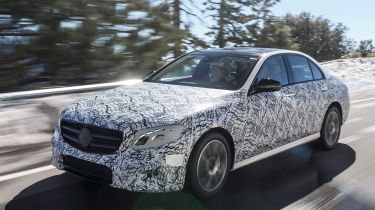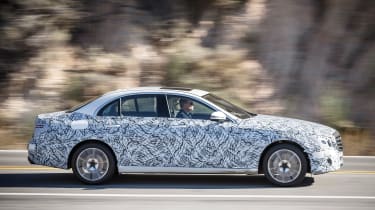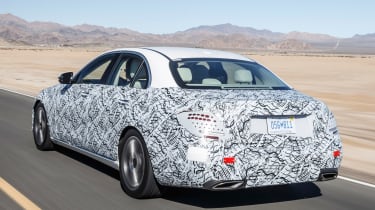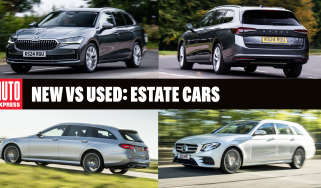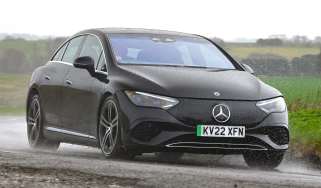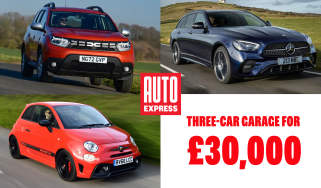New Mercedes E-Class 2016 ride review
We take a ride in the new 2016 Mercedes E-Class executive saloon as it prepares to take on the BMW 5 Series and Audi A6
The camouflage stickers aren’t fooling anyone; the disguised car is obviously a Mercedes-Benz. Proportionally it’s bigger than the C-Class, even though it shares a recognisable theme. Say hello to the new 2016 E-Class then, internally designated as W213, the code by which engineers and Mercedes enthusiasts will forever refer to it.
The new car looks softer and more elegant. Its designer, Gorden Wagener, said he wants all Mercedes-Benz saloons to have a common style: “They should all be recognisable as Mercedes-Benz limousines,” he said when speaking at last week’s LA Motor Show, and the similarities with the C-Class are obvious.
• Best executive cars to buy now
Visually, the E-Class is a diversion from the somewhat busily styled outgoing model. It isn't only its looks that are shared with the C-Class either, as the E-Class is based on the Mercedes-Benz MRA platform that features in its smaller relative as well as in the GLC SUV. In time, E-Class Coupe, Cabriolet and Estate versions with their inevitable AMG high performance spin-offs will join the family too.
Driving out of LA – on the tortured combed concrete that makes up a sizeable portion of the USA’s highways – with Michael Kelz, Chief Engineer E-Class/CLS/GLC, at the wheel is very revealing. Kelz says of the new E: “For refinement our target was the S-Class.” And the E-Class rides with a serene quietness that’s arguably better than its luxurious S-Class relation.
• Full details on the new Mercedes E-Class
There is optional dual chamber air suspension underneath and Kelz underlines the importance of the car’s luxury and suppleness.
“There are plenty of engineers who can do sporty in the company,” admits the E-Class chief, “but I am focused on comfort. It’s important”. That’s not to the detriment of engagement, says Kelz, adding: “The steering has to feel natural too, I don’t like synthetic steering.”
From the passenger seat we’ll have to take Kelz’s word on that for now, but the level of driver assistance means that, depending on the route, the E-Class could be steering itself. Technologically it’s entirely feasible that the E-Class could drive fully autonomously, although legislatively it’s not presently allowed.
On the long, relatively straight roads we’re on, the E-Class is obviously an easy drive, Kelz having only to brush a button on the steering wheel when occasionally prompted, the car checking he’s still paying attention. And if he isn’t, it’ll give further warnings before slowing to a controlled stop.
Allowing the E-Class its huge arsenal of safety and driver assistance is an all-new electronic architecture, a CAN bus system that makes the E-Class the most technologically advanced car in the Mercedes-Benz line-up. It's even ahead of the new S-Class, until that car is upgraded with a development of the E’s ‘Star 2.3’ electronics.
The E-Class is set to be available with an extensive range of modular three-, four- and six-cylinder petrol engines, as well as a new four-cylinder turbodiesel, anticipated to be offered in several states of tune. All will drive via the nine-speed 9G-Tronic auto, while 4Matic four-wheel drive will be rolled out after the initial launch phase early next year. A hybrid and, at the other end of the spectrum, a bi-turbo 4.0-litre V8 E 63 AMG will also be offered.
Both examples of the new E-Class we rode in demonstrated that it promises a sizeable step in luxury over its predecessor. The design of the interior we’ve been sworn to secrecy on, though what is evident is greater passenger space, as well as a more generous luggage compartment.
The new Mercedes E-Class is set to be revealed at the Detroit Motor Show in January before sales start early next year.
Do you think the new Mercedes E-Class will out-class the BMW 5 Series? Let us know in the comments section below...
Find a car with the experts
